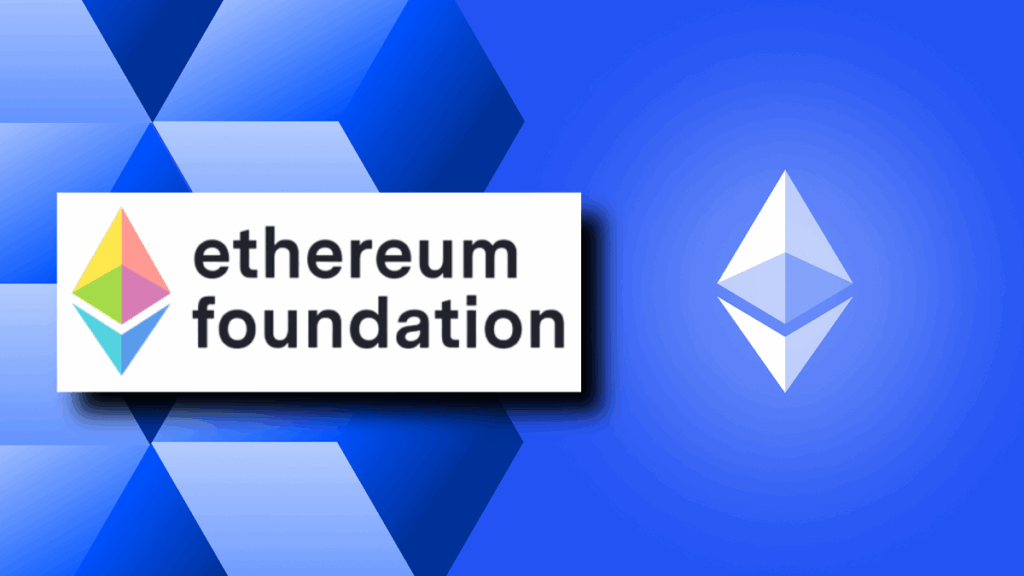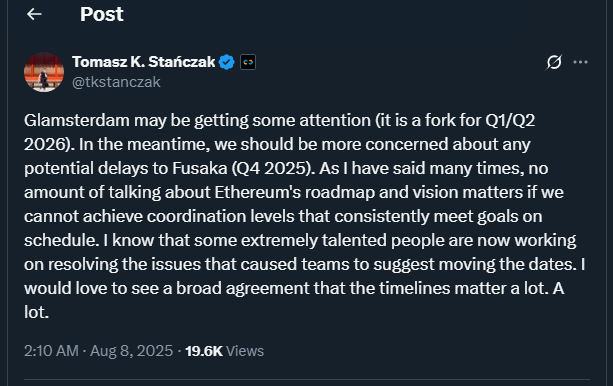TL;DR
- The Ethereum Foundation’s co-executive director Tomasz K. Stańczak emphasizes the urgency of focusing on the Fusaka upgrade scheduled for late 2025, warning that discussions around the Glamsterdam upgrade in 2026 should be put on hold.
- Current delays in consensus-client releases threaten Fusaka’s timely rollout.
- The Foundation has reorganized its development teams to improve coordination and ensure Fusaka meets its deadlines.
Tomasz K. Stańczak, co-executive director of the Ethereum Foundation, recently urged developers to prioritize the Fusaka upgrade, planned for the fourth quarter of 2025. He warned that the community’s growing focus on Glamsterdam, expected in early 2026, risks distracting from the more immediate and critical task of completing Fusaka.
While Glamsterdam promises major protocol enhancements such as enshrined proposer-builder separation and block-level access lists, Fusaka remains essential for maintaining Ethereum’s network stability and incremental improvements. Without Fusaka, the ecosystem risks falling behind on key upgrades that improve security and efficiency, potentially affecting user confidence and developer adoption across the globe.
Coordination Challenges Affect Fusaka’s Timeline
Ethereum’s upgrade schedule has faced repeated challenges, and Fusaka is no exception. Recent core developer calls revealed delays in consensus-client releases, which could push milestones into late September. This tightens the schedule for deploying Fusaka on mainnet before the November Devconnect event, leaving little room for setbacks. To address this, the Ethereum Foundation reorganized its research and development teams to improve coordination across clients, research, and security groups, aiming to reduce communication gaps and speed decision-making.
These changes reflect an understanding that seamless collaboration is critical for executing complex network upgrades on time. Additionally, client teams must balance reliability work and performance improvements while preparing infrastructure for the upgrade, a complex task requiring focus and precision.
Balancing Immediate Needs With Future Innovations
Stańczak recommended reducing the number of calls dedicated to future forks to allow teams to concentrate fully on delivering Fusaka’s public testnets and final release. His message was clear: no matter how exciting Ethereum’s long-term roadmap is, consistent coordination and meeting deadlines are crucial. The Ethereum Foundation’s renewed focus on execution and delivery aims to ensure Fusaka launches on time, providing a solid foundation for future upgrades and innovations.

This pragmatic approach helps keep Ethereum’s network robust and prepares it for the challenges ahead. By staying disciplined on current priorities, Ethereum can continue to build trust among users and developers worldwide, strengthening its position as a leading blockchain platform that balances innovation with stability, scalability, and security for years to come.











